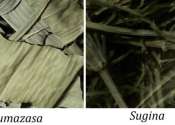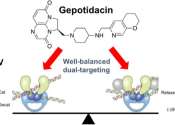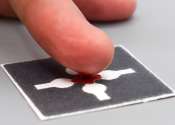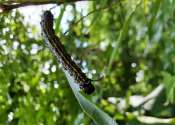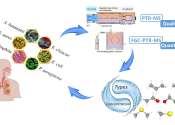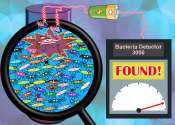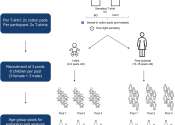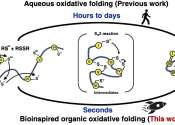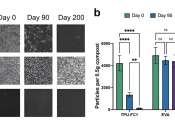Last update:
Biochemistry news

Scientists study lipids cell by cell, making new cancer research possible
Imagine being able to look inside a single cancer cell and see how it communicates with its neighbors. Scientists are celebrating a new technique that lets them study the fatty contents of cancer cells, one by one.
Biochemistry
12 hours ago
0
53
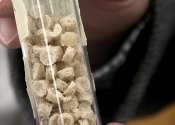
Researchers develop eggshell 'bioplastic' pellet as sustainable alternative to plastic
What if there was plastic-like material that could absorb excess nutrients from water and be used as a fertilizer when it decomposes? That product—a "bioplastic" material—has been created by University of Saskatchewan ...
Biochemistry
16 hours ago
0
78

Researchers create artificial cells that act like living cells
In a new study published in Nature Chemistry, UNC-Chapel Hill researcher Ronit Freeman and her colleagues describe the steps they took to manipulate DNA and proteins—essential building blocks of life—to create cells that ...
Biochemistry
18 hours ago
0
57

Plastic food packaging can contain harmful chemicals that affect hormones and metabolism, researchers find
Plastic is a very complex material that can contain many different chemicals, some of which can be harmful. This is also true for plastic food packaging.
Biochemistry
19 hours ago
0
16

New toolkit makes molecular dynamics simulations more accessible
Molecular dynamics (MD) simulations have become a powerful tool in the ever-growing fields of molecular biology and drug development. While many MD simulation techniques exist, parallel cascade selection MD (PaCS-MD) is a ...
Biochemistry
19 hours ago
0
12

Research seeks solution to PFAS chemicals in waste
Texas A&M AgriLife Research scientists are looking for a better way to remove or degrade stubborn pollutants, also called forever chemicals, from waste before they impact human and animal health.
Biochemistry
Apr 22, 2024
0
4
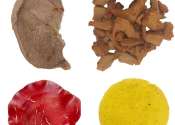
Some plant-based steaks and cold cuts are lacking in protein, researchers find
Many plant-based meats have seemingly done the impossible by recreating animal products ranging from beef to seafood. But beyond just the taste and texture, how do these products compare to the real thing in nutritional value? ...
Biochemistry
Apr 19, 2024
0
128

Researchers explore medicinal potential of lotus benzylisoquinoline alkaloids
A research team has made progress in understanding benzylisoquinoline alkaloids (BIAs) in lotus (Nelumbo nucifera), highlighting their presence in various tissues and their potential for novel drug development.
Biochemistry
Apr 16, 2024
0
1

Researchers create new AI pipeline for identifying molecular interactions
Understanding how proteins interact with each other is crucial for developing new treatments and understanding diseases. Thanks to computational advances, a team of researchers led by Assistant Professor of Chemistry Alberto ...
Biochemistry
Apr 16, 2024
0
42

New time-resolved ultraviolet photodissociation mass spectrometry strategy for target protein stability analysis
How mutations impact protein stability and structure dynamics is crucial for understanding the molecular mechanism of the disease and the targeted drug design. However, probing the molecular details of mutation-induced subtle ...
Biochemistry
Apr 16, 2024
0
0

Scientists develop maleic acid-treated bacterial cellulose gel for enhancing bone repair
The field of bone tissue engineering (BTE) is a promising avenue for addressing bone injuries and defects by constructing artificial scaffolds with bionic functionalities. Due to its unique 3D network structure, impressive ...
Biochemistry
Apr 15, 2024
0
1

Scientists find new ways to convert inhibitors into degraders, paving the way for future drug discoveries
Researchers have discovered ways to convert inhibitor-style targeted cancer drugs into small molecules known as degraders, which help destroy cancer-promoting proteins in cells.
Biochemistry
Apr 11, 2024
0
34

Recent advances in application of polysaccharides in cosmetics
With the increasing application of natural ingredients in the cosmetics industry, the beneficial properties of natural polysaccharides have been effectively harnessed. Certain polysaccharides exhibit superior moisturizing ...
Biochemistry
Apr 10, 2024
0
11

Polysaccharide-based membranes with high wet mechanical properties for bone repair
Currently, membrane materials play an important role in tissue repair, especially polysaccharide-based membranes, attracting much attention due to their excellent biological properties. However, poor mechanical properties ...
Biochemistry
Apr 10, 2024
0
1

A promising target for new RNA therapeutics now accessible
Only recently, a new era in medicine began with the first RNA vaccines. These active substances are modified RNAs that trigger immune responses of the human immune system. Another approach in RNA medicine targets the body's ...
Biochemistry
Apr 10, 2024
0
65

Research uncovers why urine sprayed by cats emits a pungent odor
Cats communicate with others through their scents. One of their scent-marking behaviors is spraying urine on vertical surfaces such as walls and furniture. Although spraying plays an essential role in the feline world, it ...
Biochemistry
Apr 10, 2024
0
64

A microbial plastic factory for high-quality green plastic
Engineered bacteria can produce a plastic modifier that makes renewably sourced plastic more processable, more fracture-resistant and highly biodegradable even in seawater. The Kobe University development provides a platform ...
Biochemistry
Apr 9, 2024
0
42

Drug delivery innovation: Multifunctional system based on switchable peptide-stabilized emulsions
A new study led by Prof. Meital Reches of the Hebrew University with Mr. Daniel Boas, a Ph.D. student in her group and team of collaborators, has pioneered a new drug delivery system centered on switchable peptide-stabilized ...
Biochemistry
Apr 9, 2024
0
35

Researchers develop better way to make painkiller from trees
Scientists at the University of Wisconsin–Madison have developed a cost-effective and environmentally sustainable way to make a popular pain reliever and other valuable products from plants instead of petroleum.
Biochemistry
Apr 8, 2024
0
184

Research unveils biochemical defenses against chemical warfare
In the clandestine world of biochemical warfare, researchers are continuously seeking innovative strategies to counteract lethal agents. Researchers led by Jin Kim Montclare, Professor in the Department of Chemical and Biomolecular ...
Biochemistry
Apr 8, 2024
0
1
Other news

Lunar landforms indicate geologically recent seismic activity on the moon

How light can vaporize water without the need for heat

New evidence found for Planet 9

CMS Collaboration observes new all-heavy quark structures

World's chocolate supply threatened by devastating virus

Fruit fly pest meets its evolutionary match in parasitic wasp

Artificial mucus identifies link to tumor formation

Investigating the many flavors of edible ants




















































